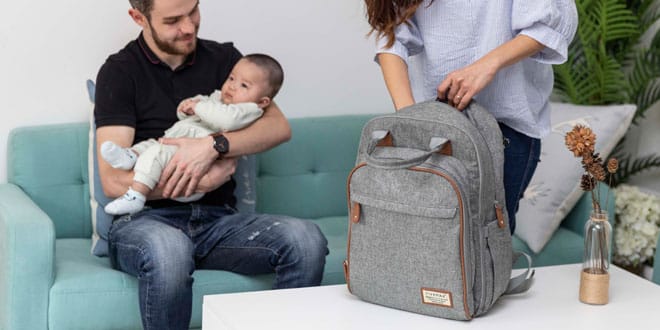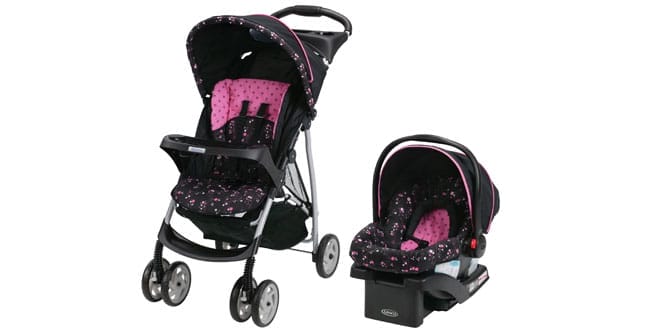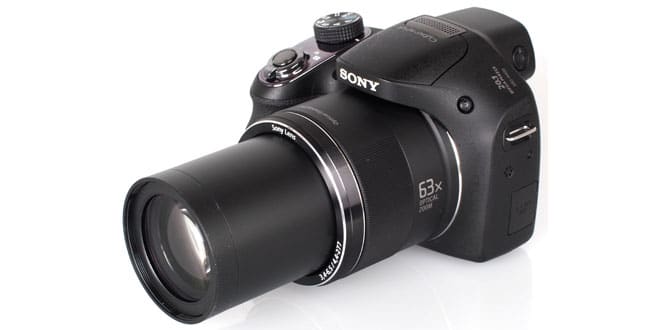Table of Contents
Yoga mats are essential for anyone looking to practice yoga or other forms of exercise. They provide comfort and stability, helping you stay in the correct posture while performing your poses. With so many different types of yoga mats available on the market, it can be difficult to choose the right one for you. To make things easier, we have compiled a list of the top 10 most popular yoga mats of the year (2025). Fitness lovers should consider this list when shopping for their next mat. From lightweight travel-friendly options to premium eco-friendly designs, this selection has something that will suit every budget and need. So read on and find out which is the best yoga mat for you!
What is a Yoga Mat?
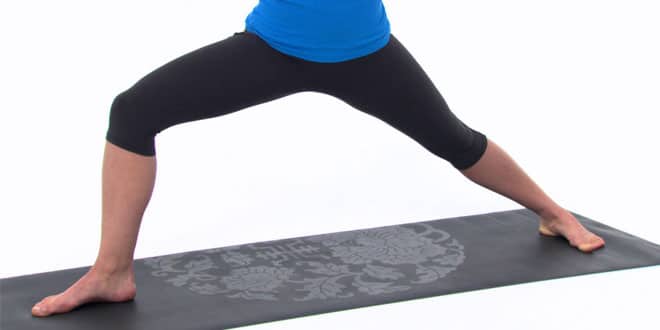
A Yoga Mat is a mat that is specifically designed for yoga poses and exercises. It provides a comfortable, non-slip surface for practitioners of the physical exercise form known as yoga. Providing a grip between your hands or feet and the floor makes difficult postures much easier to perform.
Yoga mats are usually made from materials such as rubber, latex foam, polyvinyl chloride (PVC), or jute/cotton – they can also be made from recycled materials like cork and natural tree rubber. The texture and thickness of each material type vary significantly to provide users with control over their practice both physically and mentally. Thicker mats offer more cushioning while thinner ones provide stability during more complex movements. They come in different colors too!
In addition to supporting you, while performing postures correctly, yoga mats also serve a few other important functions such as protecting your joints from too much pressure during supported poses as well as helping maintain hygiene levels by preventing bacterial transmission between practitioners using the same mat at different times (especially important in studios where multiple people use the same equipment). On top of all this – many people find them aesthetically pleasing! Overall they’re an incredibly useful tool for anyone looking to improve their physical health through yoga practice but also reap some of its psychological benefits too!
Related: How Learning Motivational Dance Can Help to Boost Your Inner Peace?
Top 10 Most Popular Yoga Mats of the Year (2025)
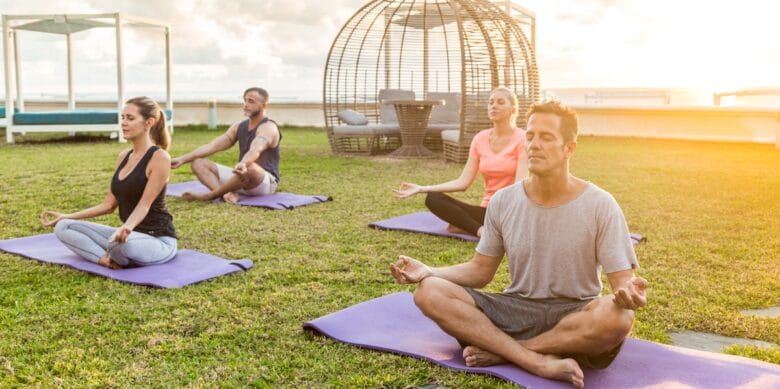
If you’re a fitness enthusiast who loves yoga, you know how important it is to have the right tools to get the most out of your practice. And there’s no tool more essential than a high-quality yoga mat. Whether you’re a seasoned yogi looking for a new mat or a beginner just starting out, there are plenty of options to choose from. From extra-padded mats to eco-friendly options, there’s a yoga mat out there for everyone. But with so many choices on the market, how do you know which ones are worth your investment? To help you out, we’ve compiled a list of the 10 top-grossing yoga mats of the year for fitness lovers, so you can find the perfect mat to support your practice. So roll out your mat and get ready to take your yoga practice to the next level!
See also: Top 10 Most Gifted Products in Handmade Bangle Bracelets.
1. Gaiam Yoga Mat Classic Print Non Slip Exercise & Fitness Mat for All Types of Yoga, Pilates & Floor Workouts, Pink Marrakesh, 4mm, 68"L x 24"W x 4mm Thick
- Product name: Gaiam Yoga Mat Classic Print Non Slip Exercise & Fitness Mat for All Types of Yoga, Pilates & Floor Workouts, Pink Marrakesh, 4mm, 68"L x 24"W x 4mm Thick
- Category: Most Popular >> Yoga Mats
- Product group: Sports
- Brand: Gaiam
- Model number: 05-62429
2. Gaiam Dry-Grip Yoga Mat - 5mm Thick Non-Slip Exercise & Fitness Mat for Standard or Hot Yoga, Pilates and Floor Workouts - Cushioned Support, Non-Slip Coat - 68 x 24 Inches - Marbled
- Product name: Gaiam Dry-Grip Yoga Mat - 5mm Thick Non-Slip Exercise & Fitness Mat for Standard or Hot Yoga, Pilates and Floor Workouts - Cushioned Support, Non-Slip Coat - 68 x 24 Inches - Marbled
- Category: Most Popular >> Yoga Mats
- Product group: Sports
- Brand: Gaiam
- Model number: 05-64863
3. CAMBIVO Large Yoga Mat (6'x 4'), Extra Wide Workout Mat for Men and Women, 1/3 &1/4 Thick Exercise Fitness TPE Mat for Home Gym, Yoga, Pilates, Workout (Black),6mm
- Product name: CAMBIVO Large Yoga Mat (6'x 4'), Extra Wide Workout Mat for Men and Women, 1/3 &1/4 Thick Exercise Fitness TPE Mat for Home Gym, Yoga, Pilates, Workout (Black),6mm
- Category: Most Popular >> Yoga Mats
- Product group: Sports
- Brand: CAMBIVO
- Model number: SF64
4. Gorilla Mats Premium Large Yoga Mat – 7' x 5' x 8mm Extra Thick & Ultra Comfortable, Non-Slip Barefoot Exercise Mat – Works Great on Any Floor for Stretching, Cardio or Home Workouts
- Product name: Gorilla Mats Premium Large Yoga Mat – 7' x 5' x 8mm Extra Thick & Ultra Comfortable, Non-Slip Barefoot Exercise Mat – Works Great on Any Floor for Stretching, Cardio or Home Workouts
- Category: Most Popular >> Yoga Mats
- Product group: Sports
- Brand: Gorilla Mats
- Model number: GM105-75BLK
5. Gaiam Yoga Mat - Premium 6mm Print Extra Thick Non Slip Exercise & Fitness Mat for All Types of Yoga, Pilates & Floor Workouts - Violet Vision
- Product name: Gaiam Yoga Mat - Premium 6mm Print Extra Thick Non Slip Exercise & Fitness Mat for All Types of Yoga, Pilates & Floor Workouts - Violet Vision
- Category: Most Popular >> Yoga Mats
- Product group: Sports
- Brand: Gaiam
- Model number: 05-65124
6. Sunny Health and Fitness Yoga Mat (Blue), Model:31
- Product name: Sunny Health and Fitness Yoga Mat (Blue), Model:31
- Category: Most Popular >> Yoga Mats
- Product group: Sports
- Brand: Sunny Health & Fitness
- Model number: 31
- Part number: NO. 031-B
7. Plyopic. Ultra-Grip Pro Yoga Mat – EXTREME Non-Slip Performance - Dry Grip & Wet Grip - Alignment Lines - Comfortable & Sweat Resistant - For Yoga, Pilates, Exercise, Workout, Bikram & Hot Yoga
- Product name: Plyopic. Ultra-Grip Pro Yoga Mat – EXTREME Non-Slip Performance - Dry Grip & Wet Grip - Alignment Lines - Comfortable & Sweat Resistant - For Yoga, Pilates, Exercise, Workout, Bikram & Hot Yoga
- Category: Most Popular >> Yoga Mats
- Product group: Sports
- Brand: Plyopic
- Model number: PYC1010201G
8. Extra Long & Wide Thick Yoga Mat for Tall Men & Women, 84'' x 32'' x 7mm Oversized Yoga Mat Double-Sided Non Slip, Pro TPE Yoga Mats with Strap
- Product name: Extra Long & Wide Thick Yoga Mat for Tall Men & Women, 84'' x 32'' x 7mm Oversized Yoga Mat Double-Sided Non Slip, Pro TPE Yoga Mats with Strap
- Category: Most Popular >> Yoga Mats
- Product group: Sports
- Brand: MRZZATA
- Model number: MR-YM02
9. Kinesis Yoga Knee Pad Cushion - 0.6 inch (15mm) Thick Exercise Knee Pad for Pain Free Yoga - Perfect Companion for Home Workout - Easy on the Knees, Elbows, Wrists and Back (Does Not Include Yoga Mat)
- Product name: Kinesis Yoga Knee Pad Cushion - 0.6 inch (15mm) Thick Exercise Knee Pad for Pain Free Yoga - Perfect Companion for Home Workout - Easy on the Knees, Elbows, Wrists and Back (Does Not Include Yoga Mat)
- Category: Most Popular >> Yoga Mats
- Product group: Sports
- Brand: Kinesis Yoga
10. Yoga Mat Double-Sided Non Slip, 72'' x 32'' x 7mm - Extra Wide & Thick Yoga Mat with Strap, Ideal for Men Women Kids, Professional TPE Yoga Mats for Home Workout, Pilates and Floor Exercises
- Product name: Yoga Mat Double-Sided Non Slip, 72'' x 32'' x 7mm - Extra Wide & Thick Yoga Mat with Strap, Ideal for Men Women Kids, Professional TPE Yoga Mats for Home Workout, Pilates and Floor Exercises
- Category: Most Popular >> Yoga Mats
- Product group: Sports
- Brand: MRZZATA
- Model number: MR-YM01
* You can check the reference search link for Yoga Mats.
Important things you should know about Yoga Mats
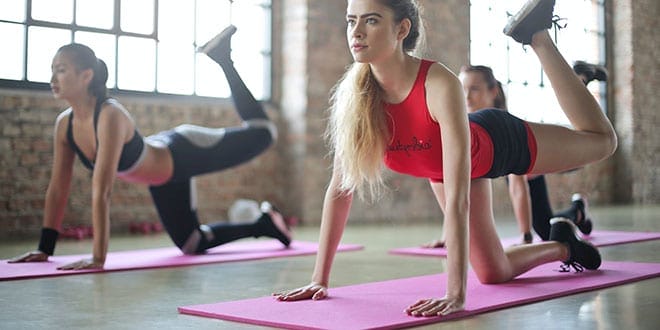
Yoga mats are an essential tool for any yoga practitioner, from beginner to expert. They provide comfort and stability while performing poses, allowing users to stay in the correct posture and get the most out of their practice. With so many different types of yoga mats available on the market, it can be difficult to choose the right one for you – but don’t worry! In this blog post, we will cover everything you need to know about Yoga Mats so you can make an informed decision when shopping for your next mat. From lightweight travel-friendly options to premium eco-friendly designs, there is a yoga mat out there that will suit every budget and need. So read on and find out which is the best Yoga Mat for you!
1. What is the best yoga mat for me?
When it comes to finding the best yoga mat for you, there’s no one-size-fits-all answer. That said, the key factors all yogis should consider when selecting a yoga mat are: thickness, material, texture, stickiness, and weight.
Thickness
Thickness is important because it provides a cushion between your body and the floor for added comfort during your practice. Generally speaking, mats with at least 5mm of cushioning provide adequate protection against hard surfaces while allowing you to maintain proper alignment in poses.
Material
The material of your mat also plays an important role in determining its quality – some popular materials include natural rubber (eco-friendly option), memory foam (durable), and PVC plastic (affordable). The best way to choose is by considering how much moisture or sweat your skin produces while practicing which will influence which material works best for you. For example, if you tend to sweat more often then a PVC plastic or fabric mat may be better than rubber as they are water resistant and prevent slipping while practicing postures like Downward Dogging where feet may slip from regular rubbery mats.
Texture
The texture is another factor to think about since it helps keep us grounded during our practice both physically and mentally – look for non-slip bottom surfaces with easy grip top part but still soft enough not to cause any discomfort on hands or soles of feet after long periods of standing poses like Warrior III’s or balancing ones such as Tree pose.
Stickiness
Stickiness refers mainly to how much traction we can get from our mats — since contact between hands/feet/skin & yoga mat affects stability & balance directly most people usually opt for slightly sticky surfaces so that poses stay steady even when transitioning from one posture into another e.g using Full Locust pose into Half Cobra Pose sequence — but this differs depending on individual preference since every person has different type & level of perspiration leading some preferring less grippy surface with maybe few droplets around but yet maintaining good control over movement itself throughout practice sessions.
Weight
Lastly weight – this again varies depending on the type of activity /practice we perform, many prefer the lightest available option due to finishing their session without feeling drained out afterward whilst others might enjoy having a more stable slightly heavier version giving them a sense of security when ‘grounding’ themselves each time performing an inverted posture like Headstand or Handstand variations. So choosing the right combination would depend entirely upon personal preferences & needs.
So in short -there isn’t such a thing as a “best yoga mat” overall however what does matter most here would be getting Yoga Mat tailored just perfectly according to your own specific requirements leaving enough space still exploring other suggestions coming along way helping improving daily practices further!
2. What are the different types of yoga mats?
Yoga mats are what you use as a cushion between yourself and the floor, providing a stable and comfortable practice surface. There are many different types of yoga mats out there, each designed to meet the needs of different types of yogis. Here is an overview of the various types of yoga mats available:
Standard Yoga Mats
These are usually made from either PVC or Thermoplastic Elastomer (TPE). They are light, durable, and slip resistant. Standard yoga mats come in a variety of colors and thicknesses to suit any preference or budget. Some can even fold up for easy transport!
Natural Rubber Yoga Mats
If you’re looking for a sturdier mat that can last over time, natural rubber may be your best choice. Natural rubber has a superior grip even when wet so it’s great for doing more intense poses like inversions or arm balances without slipping around on your mat!
Eco-Friendly Yoga Mats
Made from sustainable materials like jute, cotton blends, or natural rubber; eco-friendly yoga mats offer all the same benefits as other high-quality ones – but with less environmental impact! Plus they often have beautiful design patterns on them that make them look extra special while supporting sustainability at the same time!
Cork Yoga Mats
Cork is known for its antimicrobial properties which makes it perfect for those who practice hot yoga or want something very hygienic to work out on every day! It also has excellent grip so will keep you firmly in place during challenging poses too – just make sure to treat it properly by giving it regular cleanings with mild soap and water after class ends each day!
Manduka PROlite & PRO Mat Series
If you’re looking for maximum support then this might be your best bet – both options feature an impressive 2mm thick foam base layer that provides superior cushioning even through long sessions while still remaining lightweight enough to easily travel with if needed (the PROlite variant weighs only 4lbs!). This line also comes with a lifetime guarantee which ensures quality against wear & tear over time too!
Overall there are plenty of great options out there when it comes to finding the right type of yoga mat; no matter what kind suits you best – whether traditional PVC/TPE construction or eco-friendly variants like cork and jute – just remember that quality counts above all else since having a good foundation is key part successful practice!.
3. What are the benefits of using a yoga mat?
Yoga mats are essential tools for engaging in yoga practice, as they provide a comfortable and supportive surface for practitioners to work on. A good yoga mat is an investment that will pay off with improved posture, enhanced flexibility, increased strength, and greater stability.
Comfort
For starters, a quality yoga mat provides comfort during the practice. Asana (physical) poses can be difficult enough without having to deal with an uncomfortable surface; by using a thin layer of cushioning to protect against sore or tender joints such as knees or elbows or even feet when transitioning between postures. This padding will help improve balance throughout your practice as well as provide support in specific areas like the lower back when doing seated poses. It also can give you traction so that you don’t slip in challenging standing postures and inversions such as handstands or headstands.
Hygiene
The second benefit of using a dedicated yoga mat is related to hygiene – it acts like a barrier between you and any number of unpleasant germs from the ground (in case you find yourself outdoors!). Additionally, many practitioners have allergies which could be aggravated if not addressed properly if lying directly on the floor or similar surfaces was done regularly without protection from said allergens -such as mites dust etc- common on some floors.
Posture
Using a quality mat can also help promote better alignment during your session; aiding in body placement for various postures which helps minimize strain on back muscles while increasing circulation throughout other parts of the body due to its textured grip design. By learning correct positioning through the use of props such as blocks straps belts, etc., one might be able to create perfect form resulting from proper body mechanics along with enhanced relaxation thus promoting better overall health outcomes long term!
Motivation
Finally, some people value their mats spiritually because it reminds them daily why they are practicing: Place this item upon your sacred space each day before beginning your meditation/yoga journey whether at home or at the studio, treating it like an altar where calming energy flows freely through each movement! Namaste!

4. How do I care for my yoga mat?
Caring for your yoga mat is an essential part of maintaining the health and longevity of your practice. With a few simple steps, you can ensure that your yoga mat will stay clean, healthy, and safe for years to come.
First, it’s important to clean your mat after each practice with a gentle cloth or towel dampened with water. This helps remove any sweat or dirt which could harm the integrity of its material if left unchecked. After wiping off excess moisture from the surface of the mat, allow it to air dry before rolling it up or storing away until the next use.
Second, depending on how frequently you practice, you may want to deep clean your yoga mat once every month or two by mixing one-part white vinegar into three parts warm water in a spray bottle and spritzing over its entirety while wiped down with a wet washcloth. Let sit for several minutes before rinsing off the solution and wiping lightly with a soft cloth (or paper/hand towels). You may need two-three cycles of cleaning and drying like this if needed; doing so helps prevent bacteria build-up as well as unwanted smells!
Thirdly – make sure not to store away mats without letting them completely air dry first! Doing so can result in mildew growth on (and inside!) its surface which isn’t just unpleasant but also unhealthy for our bodies when practicing upon them directly afterward! Instead, opt for folding them loosely but laid flat rather than rolled up (this gives more space between edges/folds) until all moisture has evaporated before storing them neatly in closets/drawers etcetera – this ensures better breathability & longer life span overall too! By following these tips regularly we’re sure that anyone’s beloved Yoga Mat should have no problem lasting throughout yearly challenges :)
5. What are yoga mats made of?
Yoga mats are essential for anyone who practices yoga regularly, and choosing the right one for your needs can make all the difference in terms of comfort, traction, and safety. Generally speaking, most yoga mats are made from either vinyl (PVC) or natural materials such as rubber or jute.
Vinyl (PVC) Yoga Mats: Vinyl yoga mats are usually composed of polyvinyl chloride (PVC), a thermoplastic polymer. PVC is very lightweight yet durable which makes it an ideal material for a yoga mat; however, its softness also requires more frequent replacement due to wear and tear over time. Additionally, PVC is not always eco-friendly although some manufacturers have incorporated recycled materials into their product lines to help reduce environmental impact.
Natural Material Yoga Mats: Natural material yoga mats tend to be heavier and thicker than vinyl mats but they often provide excellent traction even when used on slick surfaces like tile floors. Natural material options include rubber, jute fiber, cork composite, organic cotton/natural fabrics, and other plant-based items such as bamboo or leaf fibers. Despite being more expensive than vinyl options these natural materials will last longer since they don’t compress over time like PVC does making them a better long-term investment overall. Furthermore, many people prefer the feel of natural material against their skin versus the plastic feel associated with synthetic products like vinyl so they may actually be more comfortable in use!
6. Where can I buy a yoga mat?
Finding a good yoga mat that is perfect for you can be challenging, but the effort is well worth it. Your yoga mat is an essential part of your practice and having one that meets all of your needs helps make your practice more enjoyable and effective. Here are a few tips on where to buy a yoga mat:
Local Stores
Many local stores now carry yoga mats. Check with sporting goods stores and fitness centers in your area; some even specialize in yoga products. If you’re looking for something specific (a certain thickness, texture, or other feature), physical stores may be able to help you find something to fit what you need – plus they often offer helpful advice to go along with the product! Take your time picking out the one that best fits your needs as it will pay off in the long run when practicing at home or at a studio.
Online Retailers
Online retailers like Amazon offer a wide selection of different types of mats from basic models suitable for beginners to high-end mats designed specifically for advanced practitioners. It’s also possible to purchase additional accessories such as straps, blocks, or weights which can greatly enhance your practice whether at home or in class. With online shopping becoming increasingly popular these days due to its convenience factor – this could potentially be a great option if there isn’t an accessible store near you!
Yoga Studios & Gyms
Many studios and gyms have their own brand of yoga mats available which include thicker versions than those found at most retail outlets (perfect if you tend toward joint pain). Plus purchasing through them allows customers access to other benefits such as special discounts on memberships/products or classes tailored specifically around using said mat(s); so do take advantage when possible!
Specialty Stores
Specialized stores exist around the country focused solely on selling Yoga related products including mats – typically these places are stocked full of top-quality gear manufactured by trusted brands backed by extensive warranties ensuring customers peace of mind knowing they bought something reliable & durable. However, prices may vary depending on region/location (so definitely shop around!).
No matter where you end up buying from just remember – to choose wisely and buy carefully; always research before investing any money into anything new… especially pricey items like Yogamats because after all don’t we want our investment into our well-being last?
7. How much does a yoga mat cost?
The cost of a yoga mat can vary widely, depending on what type you’re looking for. Generally speaking, most basic mats come in the $15-$30 range. More high-end specialty mats may reach up to around $100 or even higher if made from organic materials or designed with extra features such as support cushions and straps for easy carrying.
For those just starting out in yoga, it’s best to purchase a basic mat at first until you find out what your individual needs are when it comes to comfort and cushioning. You want something between 1/8” and 1/4” in thickness so that you have enough traction on the floor while also being able to move comfortably through various poses without too much strain on your joints or muscles. Extra cushioning is nice but not absolutely necessary and can be added later as needed by purchasing a thicker pad meant specifically for use beneath the mat.
Speaking of pads – If you’re practicing yoga regularly then investing in one of these is definitely recommended! The purpose of the pad (also commonly referred to as “props”) is twofold: It helps protect your joints from injury when doing more intense poses like downward dog, handstands, etc., while also providing an extra layer of cushioning for delicate pressure points like wrists or ankles during seated postures. Most yoga props cost anywhere between $20-$50 per piece depending on the size and type being purchased – again this will depend entirely on what fits best into your own personal practice and budget constraints!
Related: Top 10 Most Gifted Yoga Mats.
Conclusion

No matter what your budget or fitness level is, there is a yoga mat out there that will work for you. Whether it’s from an online retailer like Amazon, a specialty store, or even through the gym where you practice – taking time to research and find one that fits both your needs and price range is essential in order to get the most out of your investment. Additionally, investing in props such as pads can help protect joints during more intense poses while also providing extra cushioning when needed. With these tips in mind, we hope this article has helped guide you toward finding the perfect yoga mat for yourself! Happy shopping!















